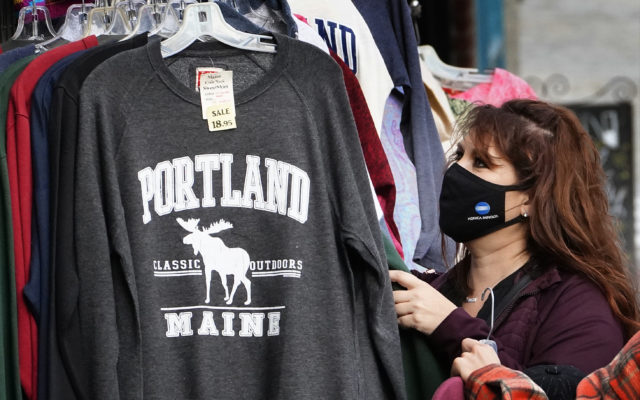
To be effective, frequently changing mask recommendations need to be clearer and easier to find
By BDN Editorial Board
Last week, the U.S. Centers for Disease Control and Prevention recommended that people resume wearing face coverings indoors in counties with high or substantial community transmission of COVID-19.
Gov. Janet Mills quickly adopted those recommendations for Maine, as the number of new coronavirus cases in the state continues to rise.
“We continue to strongly urge all people to protect themselves, their loved ones, and their communities by getting your shot,” Mills said last week. “In the meantime, we recommend that Maine people follow the U.S. CDC’s updated public health recommendations,” which include wearing masks indoors in counties with quickly increasing rates of new COVID cases.
In Maine, our population is small, especially at the county level, and we thankfully have low rates of COVID infections. As a result, there can be daily fluctuations in transmission rates.
This results in daily changes in what counties fall within the federal and state masking recommendations. One day, masks are recommended in a county; the next they may not be.
For example, last Friday, masks were recommended in Waldo, Hancock and York counties.
On Thursday, the masking recommendation covers Aroostook, Cumberland, Lincoln, Penobscot, Piscataquis, Waldo and York counties, according to the governor’s office.
This is very confusing.
It is also difficult to find this information, although state officials are working to improve this. It is posted on the governor’s office COVID-19 page and was moved higher on that page on Thursday. Likewise, the Maine Center for Disease Control and Prevention website has been updated to link to both the governor’s office list of counties and to the federal CDC webpage, which color codes counties by their COVID transmission rates.
Just like vital information such as school closures and Amber alerts, this information needs to be more readily shared with Maine residents and visitors. We’re not sure how best to do that, but using the state’s electronic roadside signs, its 211 system and media websites are potential avenues for better disseminating this needed information.
The Maine CDC is currently considering these and other ways to easily get this information to more people, the agency’s spokesman Robert Long told the BDN editorial board.
“The intent is not to confuse,” he said. “The intent is to provide information to people so they can make informed decisions.”
It is also important to remember that the federal masking recommendations are the result of rapidly rising numbers of COVID cases in parts of the country, such as Louisiana, South Carolina, Florida and Texas, where vaccination rates are typically low.
Vaccinations remain the best way to slow the spread of coronavirus. In addition, if more people are vaccinated, that also slows the mutation and replication of new strains of the virus.
The delta strain, which emerged in India and is now the dominant strain in the U.S., is more transmissible and more virulent than the strain that spread across the country last year.
Maine, generally, has high vaccination rates compared to other states. Overall, nearly 70 percent of the eligible population is fully vaccinated in Maine, among the highest in the country. But, vaccination rates vary by county, from a high of 82 percent in Cumberland County to a low of 55 percent in Somerset County. Communities with low vaccination rates offer places for COVID to grow and spread more easily.
No one wants to return to wearing a mask. But, until more people in Maine — and around the country — are vaccinated, donning one indoors offers a layer of protection. The state is right to seek ways to make its masking recommendations easier to understand, and to find.
If in doubt, you can wear a mask indoors no matter where you are.